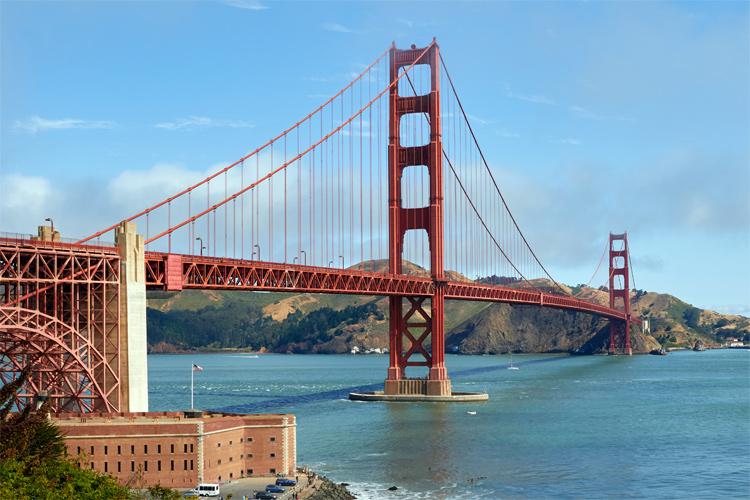In October 1987, a lost windsurfer was rescued in San Francisco Bay, California. His name was John. Today, there's someone whose dying wish is to find him. His name is Chuck Dougherty.
San Francisco Bay is one of the most celebrated and iconic sailing venues in the world.
But it is also a tricky area, with powerful and shifty winds and currents that can quickly make things difficult for inexperienced water participants.
Whether you're sailing west or east of the Golden Gate Bridge, you'll need to master your watercraft and know how to get to terra firma safely.
Weather conditions are always challenging here. That's what makes the Bay so popular with windsurfers.
Tide and current patterns in San Francisco Bay are impressive and contributing factors that boaters need to contend with.
A flood or ebb tide current flowing under the Golden Gate Bridge reaches speeds of 6 to 8 knots.
This current flows into the Bay and spreads out, flows past Coyote Point Recreation Area, and continues south 25 miles to the end of the Bay at the Port of Alviso.
Just as rivers speed up through narrow channels, creating rapids, so do tides that flow under the bridges and as winds do between mountain peaks.
Winds in the Bay Area have been reported at speeds in excess of 100 miles per hour.
Previous sailing fatalities on the Bay have included Hobie Cat sailors who were unable to right their capsized boats.
Even though they were wearing full wetsuits and able to stay out of the cold water atop their boats, they died from hypothermia.
In the 55-degree water of San Francisco Bay, a person could only be expected to survive one to two hours.
Two Hobie Cat sailors who had perished near the San Mateo-Hayward Bridge and two more from just outside the Golden Gate all died from hypothermia.
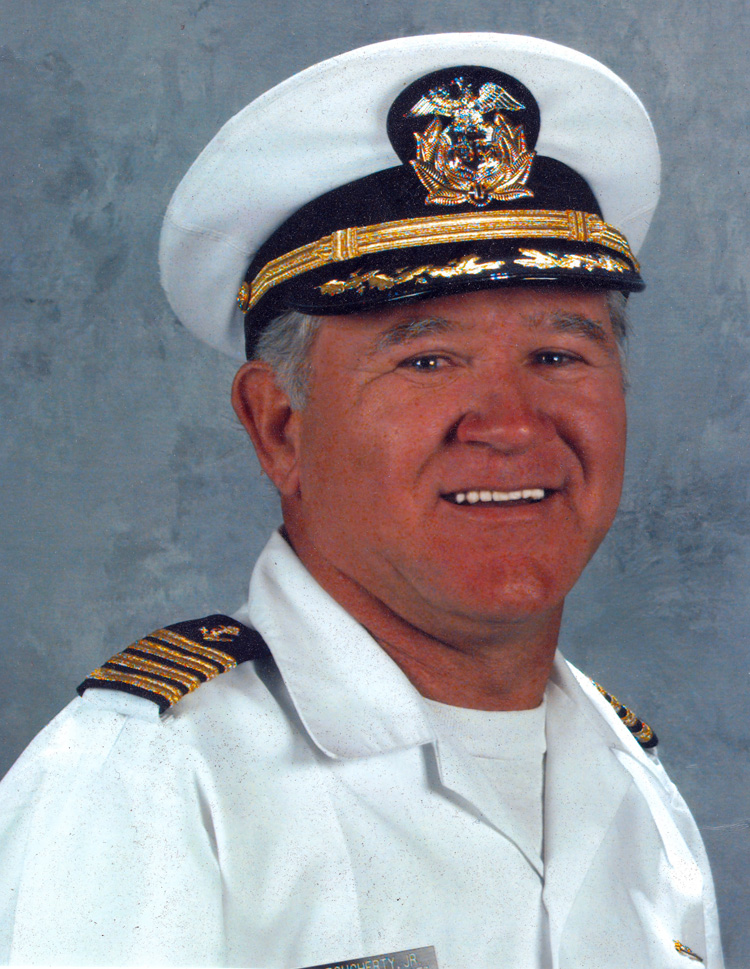
Chuck Dougherty: A Life Dedicated to Sailing
While a full-time community college instructor and coach, Chuck Dougherty served 15 years on reserve duty in the United States Merchant Marine (USMM).
During peacetime, USMM transports passengers and cargo; in times of war, it helps the United States Navy to deliver military personnel and material for the military.
Dougherty developed college and community-safe boating and sailing curricula and programs.
He assisted the United States Navy's Military Sealift Command (MSC) with training and education and taught part-time at the Hawaii Maritime Academy.
His contributions were many, innovative, and positive.
"For my service, a US Navy Captain nominated me for the US Coast Guard (USCG) Distinguished Public Service Award," Chuck Dougherty told SurferToday.com.
"I was eligible, did the work, and was nominated. He believed I earned and deserved the award. The USCG denied the award based on a minor technicality: the nominator was a Navy officer and not a Coast Guard officer."
Even though the Navy Captain was the director of an official Coast Guard training school for USMM officers and crew and worked directly with the Coast Guard on a daily basis, the USCG still refused to accept or recognize his nomination.
"Many years later, a USCG officer who knew me personally supported and signed the nomination, but she too was disqualified because she was retired and no longer on active duty," adds Dougherty.
"After 25 years, the issue was finally settled last year, with the Coast Guard still denying the award, even though the actions I performed exceeded that of others who have been given the award."
Chuck Dougherty is sad and disappointed. As of 2020, he is 77 years old.
Being one who never quit, in spite of having a disability, he remembered that he had one last chance to receive an award for all those years of service.
He recently read that there is no time limitation for submitting nominations for the USCG Lifesaving Medal.
His actions in saving a windsurfer's life back in 1987 fit the requirements for that award.
But the USCG will need to verify whether Chuck participated in the rescue of John, the beginner windsurfer.
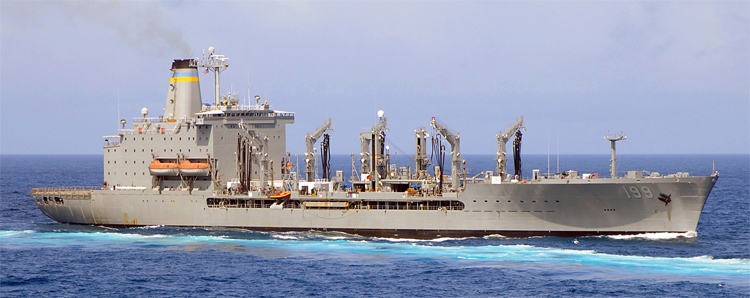
October 1987, San Francisco Bay
On this particular day, the winds were quite a bit stronger than usual.
The harbormaster had flown a red triangle flag on the Coyote Point Marina mast, indicating "Small Craft Advisories," indicating winds up to 33 knots.
"Small craft" are boats less than 33 feet in length.
The sea conditions were choppy, with white caps and two-foot swells. These are considered ideal conditions for windsurfers.
The wind was from the northwest, as usual, blowing down from across the San Bruno Mountain pass and directly across San Francisco International Airport and continuing southeast towards Coyote Point Recreation Area and the San Mateo Bridge.
The narrow pass, or saddle, between San Bruno Mountain and the Pacific Coast Range Mountains, causes a venturi effect, a condition that increases wind speed significantly.
This effect also occurs between the jib and the main sail on a sailboat.
These enhanced winds create the desired conditions for advanced windsurfers but are very difficult and dangerous for beginners.
"I think there was some kind of windsurfing regatta or contest going on that day because of the unusually large number of windsurfers on the water," notes Chuck Dougherty.
The windsurfers were all sailing back and forth in an east-west direction, alternating on starboard and port tacks, using the strong winds from the northwest.
It was interesting watching them and all their brightly colored sails. Chuck carefully maneuvered around them and stopped in the middle of their line of sail to watch.
The boat was not a problem or obstacle for the windsurfers as they could easily avoid it.
It would be like a semi-truck trying to stay clear of a group of Ferrari race cars. Their speed was amazing and fascinating to watch.
A Request for Help
After watching for a while, a windsurfer slowed as he approached Chuck's boat.
He stopped momentarily and asked him if he would help look for his friend, John. He said he hadn't seen John for a long time and that he was concerned for his safety.
Coyote Point is very difficult for novice windsurfers because of the double venturi effect that runs between San Bruno Mountain and the San Mateo-Hayward Bridge.
There have been many boating fatalities near that bridge.
Chuck asked: "Where did you last see him?"
He pointed towards the San Mateo Bridge, which was downwind and several miles away. Agreeing to try to help, Chuck headed in that direction.
There was little concern as Chuck knew windsurfers were quite capable sailors. It's a somewhat difficult sport to learn, but those who do are usually very safe, able-bodied athletes.
He anticipated John being safe, most likely still near the group, or back onshore, or at least on his way back "from who knows where?"
A lost windsurfer is a rare situation. Very few, if any, are ever reported missing or as fatalities.
The Rescue Boat
Handling a new sailboat single-handed, literally as well as figuratively, especially on a day with "small craft warnings," was too much of a challenge, so neither the main nor jib had been raised.
The boat was under engine power. Still new, there was a lot yet to learn about single-handling a boat that size.
The Bay makes learning to sail difficult, even for a 36-foot Catalina sloop. It was equipped with a roller furling jib and self-tailing wenches.
There were no auto self-steering devices.
The wheel had to be controlled manually at all times. It had a fin keel and four-foot sideboard, making it more susceptible to leeway or sideways drift.
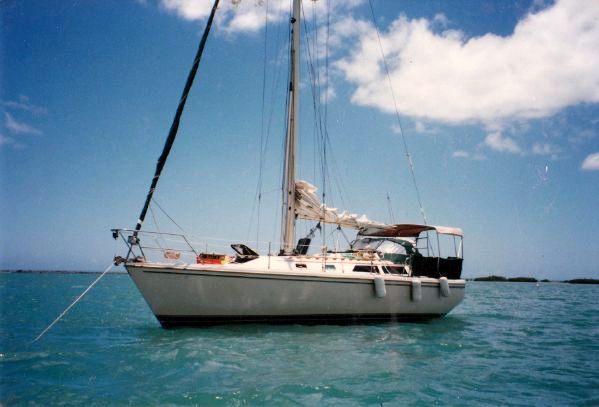
The Search for John
After motoring about two miles downwind and nearing the San Mateo Bridge, Chuck was just about ready to turn around and head back.
Surely, he thought, John wouldn't have sailed this far south intentionally, that far away from the group.
He also realized that if something had happened to John, finding a person in the water was a very remote possibility.
The Bay is a bigger "puddle of water" than most people realize, especially if they've never been on it.
Even if you're in a boat in the middle, and especially in the water, too, it can be a scary place on any given day, much less one like that day.
John is Found
Just as Chuck was ready to head back, he noticed something in the water about 100 yards further ahead and not far from the bridge.
Sailing closer, he recognized it to be a head, with both forearms clinging over the top of a windsurf board.
It was John.
Unbelievably, Chuck had found him still alive. John was so exhausted he couldn't even raise one hand to hail Chuck for assistance. It was very obvious he needed help.
However, this was not going to be simple.
To the Rescue
There were no automatically controlled steering mechanisms on the boat. The boat required a pilot at the wheel to stay on course.
The rescue required some thinking and planning. The boat weighed over 25,000 pounds. And the gunnel was 4 feet above the waterline.
Even a capable swimmer could not reach it.
The wind was blowing 25-30 knots. It was hard to control the boat and keep it steady. Without moving under its engine power, the boat was at the mercy of the wind and current.
Both John and the boat were moving downwind, closer and closer to the dangers that the San Mateo Bridge would present.
Extreme Peril
Currents swirled in eddies and whirlpools around the bridge supports. These are extremely dangerous sites.
How was John to be rescued? The engine had to be put in neutral.
The boat had to stay downwind from John or risk being pushed by the wind and current over the top of him, which would have been fatal.
Because of the boat's sideboard, the wind was blowing the boat downwind faster than John was being blown. The boat and John kept moving further apart.
Each time the boat got closer to John, the wind and current blew them further apart.
The boat was then getting closer and closer to the bridge. The boat could have been severely damaged and even sunk if it had been blown into one of the cement bridge supports.
It was not possible to both steer the boat and prepare and toss John a line at the same time.
The wind and seas rocked the boat. It pitched and rolled, making it difficult to keep balanced and prevent falling overboard.
This made throwing John a rescue line very difficult. Chuck was at considerable risk himself.
The boat had to be re-positioned several times in order to get close enough to throw a line within John's reach. John was unable to swim to the boat.
The line had to be thrown close enough to land on John's surfboard, just a few inches from his hand, before he was able to reach and grab hold of it.
Even then, it took several attempts before he was able to grab and keep hold of it.
Plan B
Chuck was beginning to think this was not going to work. John was getting weaker by the second. He could hardly even speak or move.
So Chuck actually gave thought to tying a rope around himself, attaching the end to the boat, swimming out to John, tying another rope to him, and towing him to the boat, about 30 yards away.
That was way too risky - Chuck was a weak swimmer.
There was no one anywhere nearby to help. No one knew of the situation, which was going on two miles from shore.
The boat kept drifting even further and closer to the bridge.
Finally, after many attempts, John was able to hold on to the rope long enough for Chuck to pull him, still clinging to his board, to the stern.
The windsurf board was tied to the stern, and Chuck helped John up the ladder and into the "Knotwood" cockpit. John had lost his sail in his effort to get to the boat.
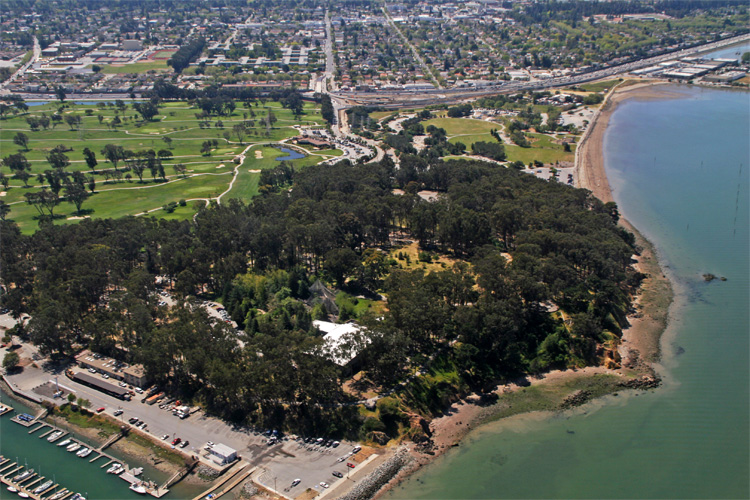
John's Condition
The US Coast Guard had granted an exception to windsurfing a decade earlier.
They "determined" that a combination of wearing a wetsuit and together with a board, constituting a flotation assistance device (FAD), was considered adequate.
Even if John had been wearing a PFD, it would not have changed his situation or physical condition.
After getting John on board, Chuck could see that John was only wearing a lightweight version of a wetsuit. It was both short-sleeved and knee-length.
He had no cap or gloves and was in bare feet. He was shaking, and his skin was turning light blue, an indication of the onset of hypothermia.
He had been in the water for over half an hour. He was totally exhausted from fighting the wind and choppy waters. There was no way he was going to be able to windsurf back or even swim back.
He was very close to perishing and most likely would have if he had not been found and rescued.
John drank some hot cocoa made on the way back and covered himself with a blanket.
Who Was John?
On the 20-minute boat trip back, John was mostly too cold to talk but told Chuck his first name and that he was an engineer from Denver, visiting his friend who lived in the Bay Area.
He appeared to be Asian - most likely Japanese - and about in his late 20s to early 30s. He was about 5'8'' and 135-140 pounds.
John said he was pretty much a beginner and that he was simply overwhelmed by and unprepared for the unexpected conditions of the Bay.
He was blown downwind and unable to tack back. It was his friend who took him to Coyote Point that fateful day.
After getting John back to the Coyote Point marina, he untied his board and walked back the short distance to the beach, from where all the windsurfers had started out.
That was the last Chuck ever heard.
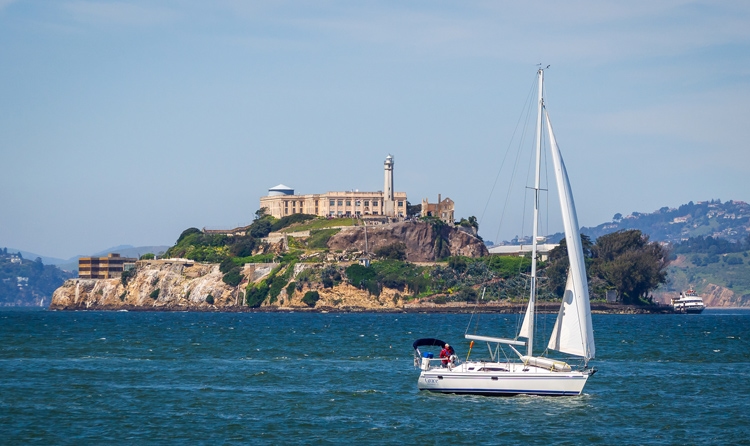
A Dying Wish
Had Chuck known at the time he rescued John, what he knows now, he might have reported the rescue to the USCG in San Francisco.
However, most rescuers don't think about lifesaving awards at the time they're making a rescue. It was the furthest thing from Chuck's mind. His only focus that day was on saving John.
Chuck is only interested and motivated now because he feels the USCG has unfairly denied his Distinguished Public Service Award (DPSA) nomination from a US Navy Captain for his 15 years of public service.
This is his last great hope in life for any recognition from the USCG for his many years of dedicated service.
But the USCG needs that information verified by John and/or his friend, who should be in their 60s today.
Dougherty says his life will not be complete without a USCG recognition. It's his "dying wish."
"I would be eternally grateful to anyone who could help me find John or his friend."
And why is Chuck offering a reward?
"I thought that would help motivate someone to respond. I had no specific amount of money in mind, but I'm willing to give as much money as necessary," the veteran tells SurferToday.com.
But money shall never be what's important. It's all about honoring someone who dedicated his life to sailing and teaching.
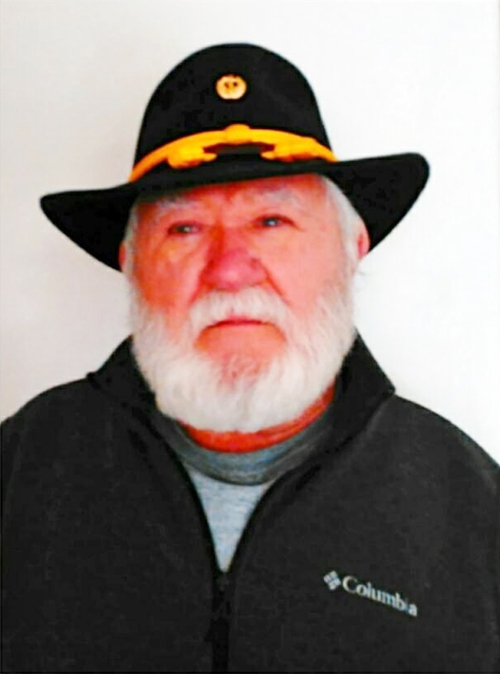
Extra, Extra
There is one additional bit of information that could support John and his friend's testimony.
"After returning John to safety, I completely forgot to remove the rope from behind my boat that was used to tow his board back," Dougherty tells SurferToday.
"The next time I backed out of the slip, the rope got tangled in my prop and caused some damage to the connection of the driveshaft to the engine."
"The yacht dealer who sold me the boat fixed the damage and asked me about what caused it. I told him about the rescue. This was less than a week later."
"I also told the story to my wife and several friends within days of that date. So they could corroborate my story or John's and his friend's version if we ever find them."
"But somebody out there has to have heard that story from John or his friend."
Are you John, the windsurfer who nearly died windsurfing at San Francisco Bay in October 1987?
Have you got any information that could help find the novice sailboarder and his friend?
Contact SurferToday. We will put you in touch with Chuck Dougherty.
It's time to add a happy ending to this incredible story.
